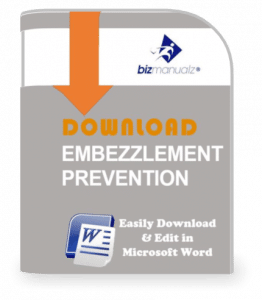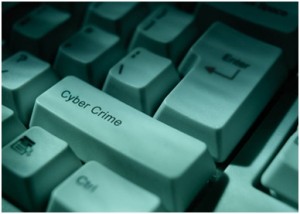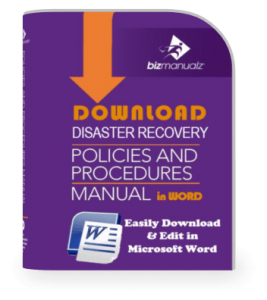How Do You Handle a Case of Fraud in the Workplace?

Handling Fraud in the Workplace

Embezzlement prevention is the process of analyzing your company’s structure and how various activities are assigned in order to decrease “windows of opportunity” for embezzlers to operate.
The last thing you need is for your business to deal with fraud in the workplace. Yet, one recent study found 47% of companies polled experienced fraud in the prior 24 months. As with so many other entrepreneurial challenges, the key is in how you handle fraud if it occurs.
If you approach the situation poorly or with insufficient preparation, the results could be disastrous. Not only can you suffer from the direct impact, but it can go on to affect your reputation, brand stability, and company culture. So, how can you best handle fraud in the workplace?
Actions of Employees
It’s not pleasant to think of your employees as capable of committing fraud. After all, they’re often your most valuable resource. Trusting them can mean your business culture thrives and you’re able to innovate. But it is also the case that they may be in a good position to take advantage.
There are several ways in which this can be present. Most commonly, this will be the embezzlement of company finances. Though, data theft is an increasingly valuable commodity. This may be in the form of stealing customer data or even intellectual property.
Preventing Fraud
Handling this always begins with prevention. You need to make sure there are responsible checks and balances in place throughout all working practices and data handling. Avoid circumstances where one member of staff has full autonomy over an aspect of company operations. This mutual ownership can help ensure potential issues are spotted early.
Responding to Fraud
Should fraud in the workplace occur, the response needs to be swift but thorough. Ensure a complete investigation is carried out before discussing the matter with the employee. This gives you a chance to gather solid facts and also understand the extent of the fraud. You should then have a closed-door meeting with the employee.
This isn’t about disciplining an employee or stopping the fraud in its tracks, but also mitigating the wider impact. This is where things can get rather delicate. Immediately pouncing on an employee with accusations of fraud can be problematic from a legal perspective and tends to put your employee in a defensive position.
This can limit your ability to identify areas of impact yet to be uncovered by investigations. So, you need to approach the matter carefully, reasonably, and from a position of empathy with the worker. Encourage them to provide you with better intelligence on the matter as it will be as much in their best interest as yours.
So, you need to approach the matter carefully, reasonably, and from a position of empathy with the worker. Encourage them to provide you with better intelligence on the matter as it will be as much in their best interest as yours.
Activities of Leadership
One of the most concerning issues is when members of leadership are key figures in fraud. A leader’s position and resources can often mean the fraud has been more effectively shielded. As such, it may have been active over a long period of time, potentially impacting various stakeholders.
There is also significant potential for reputational damage. When leaders of an organization act in this way, the disruption to brand integrity can last for years. We only have to look at some of the worst corporate fraud scandals spearheaded by executives for evidence of this.
Enron is still synonymous with misrepresented earnings, market manipulation, and embezzled funds. The Lehman Brothers’ accounting scandal had such a wide-ranging negative influence that even former association with the company is likely to give pause.
As the problems have occurred at the top levels of the organization, it’s important to bring in an outside consultant. Wherever possible, make sure they work alongside the police and establish the full facts of the case. Take care to carefully collate records of any tangible damage. Your consultant should also provide you with clear steps to make changes within the company to avoid such issues in the future.
You then need to implement a solid public relations procedure. The best approach here is to be transparent and communicative. Be open with the public and other stakeholders about not just the events but the extent of the issue. Talk about the disciplinary outcomes and the results of investigations. Importantly, provide clear advice about how you’re rectifying the situation and your planned changes for the future.
External Threats
Fraud in the workplace doesn’t always have to be instigated by internal figures. As a society, we tend to focus on individuals as the intended victims of fraud. But businesses represent more valuable and often quite vulnerable targets.
Employee Manipulation
Your employees may have been manipulated by confidence scammers into providing data, products, or even financial information to apparent clients or figures of authority. Increasingly, though, cybercrime is a key method in the fraudulent acquisition of assets. This is both in the form of illegitimately gaining access to company networks and the fraudulent use of systems either to redirect finances or commit illegal actions on others.
Disaster Recovery / Business Continuity Planning
It’s important to have a solid disaster recovery and a business continuity plan in place for these circumstances. This is because you need to be able to identify the root cause of the fraud and shut down any further access. In the case of cybercrimes, your information technology (IT) department should examine digital forensic data so you can assess the extent and potential culprits of the crime. However, prevention in the form of anti-fraud software platforms can help avoid the worst impact.
Most of your efforts from here on will go toward recovery. From a business perspective, the impact isn’t limited to your immediate finances. You need to consider that your business credit score is produced based on debts accrued, spending history, and credit utilization, among others. Fraudulent access to your systems may result in loans and lines of credit having been taken out, which will affect your good standing. You’ll need to include score repairing measures as part of your recovery plan.
Fraud in the Workplace
Fraud in the workplace is a damaging and disruptive influence on any business. It’s important to understand it can come from various places; employees, executives, and external sources are all potential perpetrators. As such, it’s important to examine and make plans for the appropriate responses in each case. Remember, though, that as with any business risk, prevention tends to be better than reaction.















This is a great knowledge needed by companies and entrepreneurs in order to reduce chances of fraudulent in the future.